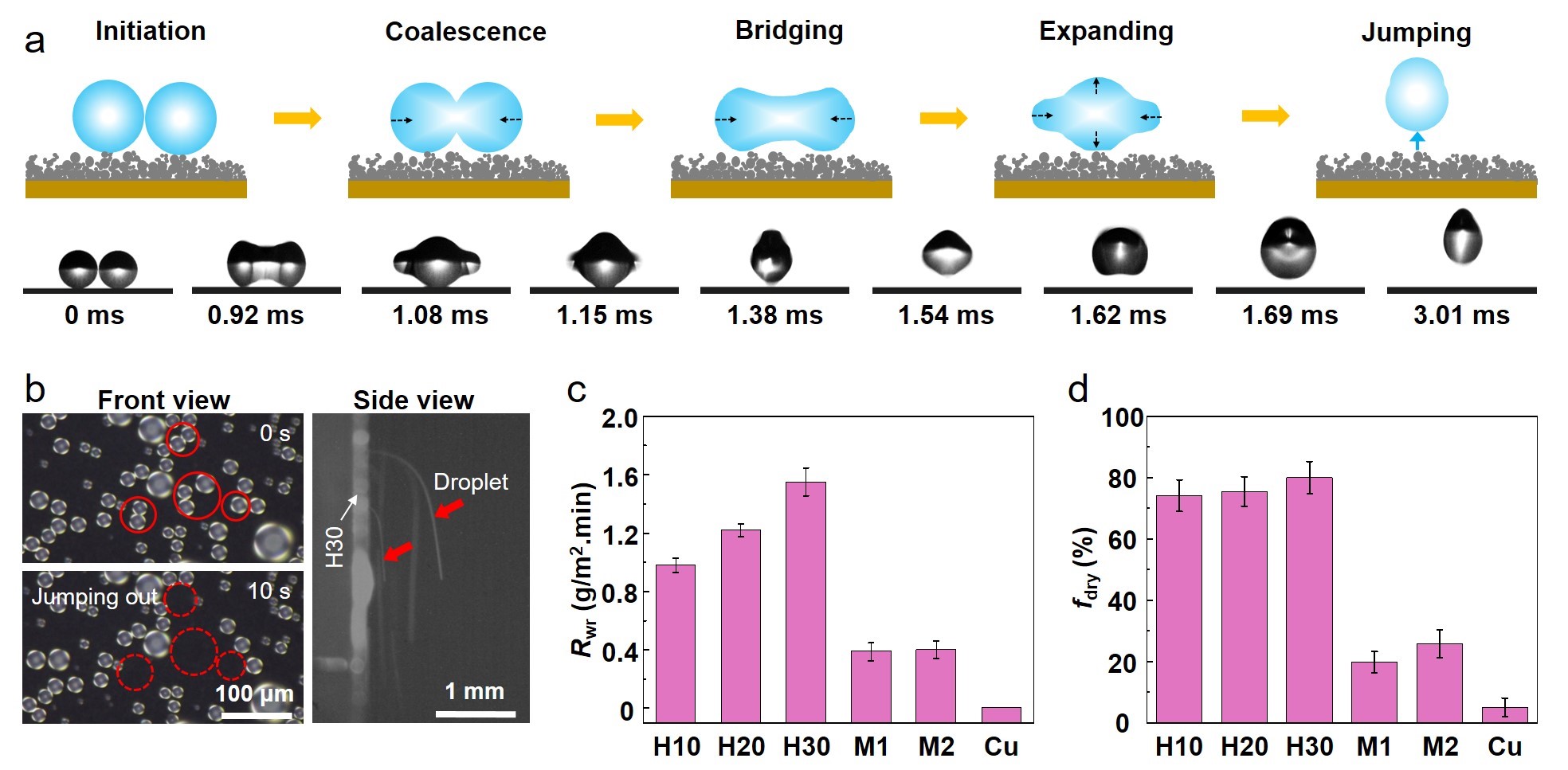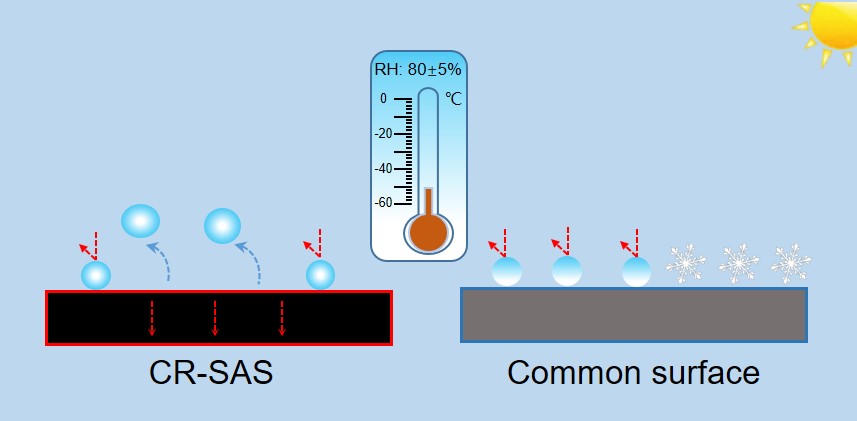Recently, Beihang’s teacher Zhang Hongqiang from the School of Mechanical Engineering and Automation collaborated with the team of He Zhiyuan, Associate Researcher from the Institute of Chemistry of the Chinese Academy of Sciences, the team of He Ximin, Assistant Professor of the University of California, Los Angeles, and researchers from Tsinghua University and the University of Illinois at Urbana-Champaign, making significant progress in anti-icing under harsh conditions (i.e., ultra-low temperature and high humidity).
Their findings, titled “Solar Anti-icing Surface with Enhanced Condensate Self-Removing at Extreme Environmental Conditions,” was published in Proceedings of the National Academy of Sciences (PNAS). The article was also reported as a Research Highlight in the journal Nature. Besides, Nature Materials made a special review of this research and thought highly of it. The research results provided engineers with hope that one day anti-icing would be fully achieved. The research paper was also reported on the website of the National Natural Science Foundation of China.
Inspired by the phenomenon of droplet jumping on wheat leaves and the photothermal transformation strategy, the team employed ultrafast pulsed laser deposition (PLD) technology to fabricate condensate self-removing solar anti-icing/frosting surfaces (CR-SAS). Under the synergistic effects of enhanced condensate self-removal and efficient solar anti-icing, the CR-SAS exhibits excellent anti-reflection and photothermal conversion performance.

Fig. 1 Fabrication and characterization of the CR-SAS

Fig.2 Condensed droplet jumping on the CR-SAS surface

Fig.3 Under extreme low temperature and high humidity conditions, the surface of the CR-SAS can achieve anti-icing
Meanwhile, the CR-SAS displays super-hydrophobicity to condensed water, which can be instantly shed off from the surface before freezing through self-propelled droplet jumping, thus leading to a continuously refreshed dry area available for sunlight absorption and photothermal conversion.
Under one-sun illumination, the CR-SAS can be maintained ice free even under an ambient environment of −50 °C ultra-low temperature and extremely high humidity (ice supersaturation degree of ∼260). The excellent environmental versatility, mechanical durability, and material adaptability make CR-SAS a promising anti-icing candidate for broad practical applications even in harsh environments.
The link to the article:
https://www.pnas.org/content/118/18/e2100978118
The link to the Research Highlight in Nature:
https://www.nature.com/articles/d41586-021-01144-2
The link to the Review in Nature Materials:
https://www.nature.com/articles/s41563-021-01028-w
The link to the website report in National Natural Science Foundation of China:
http://chem.nsfc.gov.cn/Show.aspx?AI=1036
Reported by Liang Yongjian
Reviewed by Zhang Zhigang
Edited by Jia Aiping
Translated by Zang Mingming

